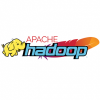Related Content
 |
2 Ways to Know Your Work Is Actually Done Some people think a good indication that a piece of work is done is if it's been tested. But by whom, and how? Testing alone doesn’t specifically determine whether you are done—especially when we probably don’t mean the same thing when we all talk about testing. Here are two ways to know when your work is truly done. |
|
 |
Trusting Your Data: Garbage In, Garbage Out Poor quality input will always produce faulty output. Improper validation of data input can affect more than just security; it can also affect your ability to make effective business decisions. Bad data can have impacts on how you make quantitative decisions or create reports, if you can’t trust the data you receive. |
|
 |
Migrating a Database? Consider These Factors First Database migration is usually performed with a migration tool or service. Migrating one database to another actually involves migrating the schemas, tables, and data; the software itself is not migrated. Whatever the reason for migration, before you start, explore the options and take these considerations into account. |
|
 |
Security Tips for App Development When companies develop applications they consider competitors and the market, but the most important aspect is cybersecurity. Developers need to release apps that don’t put consumers or their data in danger. Here are five tips that app developers should keep in mind to create and maintain the most secure apps possible. |
|
 |
Selecting the Right Node.js Framework for Your App Node.js is an open source and cross-platform runtime environment for creating server-side web apps entirely using JavaScript. There are many frameworks that work with Node.js and each excels in different areas, so selecting one comes down to preference and the specific needs of the project. Here are some popular ones. |
|
 |
Exploring Big Data Options in the Apache Hadoop Ecosystem With the emergence of the World Wide Web came the need to manage large, web-scale quantities of data, or “big data.” The most notable tool to manage big data has been Apache Hadoop. Let’s explore some of the open source Apache projects in the Hadoop ecosystem, including what they're used for and how they interact. |
|
 |
When to Use Different Types of NoSQL Databases Web-scale data requirements are greater than at a single organization, and data is not always in a structured format. NoSQL databases are a good choice for a larger scale because they're flexible in format, structure, and schema. Let’s explore different kinds of NoSQL databases and when it’s appropriate to use each. |
|
 |
A Simple Rule of Thumb for Unit Testing There's a simple rule for the minimum values testers should explore: “none, one, some”—or, how the software behaves if you send it nothing, one thing, or some set greater than one. It's not comprehensive, but it gives a good feel for how the feature works at the moment. Developers can also use this in unit testing. |





